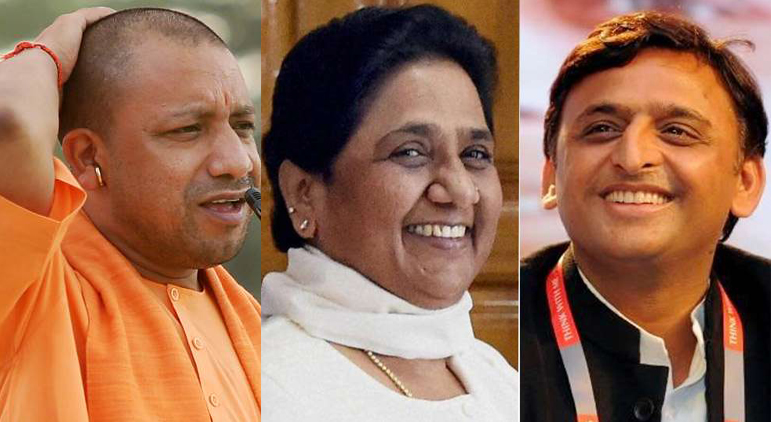Gorakhpur: The Bharatiya Janata Party loses the two key parliamentary seats in Uttar Pradesh — Gorakhpur and Phulpur — which were vacated by Chief Minister Yogi Aditynath and his deputy Keshav Prasad Maurya after their entry into the Assembly in April, 2017. The Samajwadi Party handed BJP a crushing defeat in Phulpur Lok Sabha bypoll seat as SP’s Nagendra Pratap Singh Patel registered a resounding win over BJP’s Kaushlendra Singh Patel by a margin of 59,613 votes. Samajwadi Party’s Gorakhpur candidate Pravin Kumar Nishad has won the Lok Sabha by-election with a margin of 21,916 votes.

#WATCH UP CM Yogi Adityanath says 'Yeh BSP-SP ka jo rajnitik saudebaazi, desh ke vikas ko baadhit karne ke liye bani hai, iske baare mein hum apni rann neeti tayaar karenge' #UPByPoll pic.twitter.com/DtyHvLeJqH
— ANI UP/Uttarakhand (@ANINewsUP) March 14, 2018
Both seats were a prestige fight for the BJP. Gorakhpur has been held by Yogi Adityanath since 1998 – he was the youngest MP at 26 – and three times before that by his mentor Advaidyanath. In 2014, Yogi Adityanath had managed to jump on top with 530127 votes, grabbing 51% of the voters.


On the other hand Phulpur is also an extremely prominent Lok Sabha seat that the BJP had wrested only in 2014. It has been represented by Jawaharlal Nehru, his sister Vijayalakshmi Pandit and also former Prime Minister V P Singh. The Deputy Chief Minister Keshav Prasad Maurya managed to grab the seat with 503564 votes securing a vote share of 52.43.


Since there are no permanent enemies in politics, the Samjawadi Party and the Bahujan Samaj Party have come together this time to stop the BJP. The last time they joined hands was in 1992 — to take charge of the state after the sacking of BJP’s Kalyan Singh in the aftermath of the Babri demolition.
The pilot experiment in Gorakhpur and Phulpur where the BSP has decided to support the SP candidates should provide a fairly concrete clue to the shape of things to come in UP and India in an ensuing general election. SP, BSP potentially pooled together their votes to give the BJP a run for its money in its strongholds. Since the announcement, the poll scenario has suddenly changed. The prospect of facing the combined strength of SP-BSP has turned the heat on the constituencies represented by Yogi Adityanath and deputy chief minister Keshav Prasad Maurya.
If, we look at the analysis of 2017 Assembly elections, the huge split in votes of SP, BSP, INC directly benefited BJP. The SP and the BSP have also been pitting candidates against each other instead of attempting to defeat Yogi Adityanath together.


If recent headwinds faced by the BJP in bye-elections convey a message, then it may not be good news for it. And this in turn could persuade voters in UP to tilt towards what in their eyes may be mushrooming as a winning combination, rather than be impressed by a declining duo of Modi and Yogi. The mathematical advantage is certainly with a SP-BSP-INC-RLD coalition, which enjoyed a 52% vote share in 2017 assembly election.

If we analyze the 2014 General Elections the SP, BSP, INC and Apna Dal combines have an upper hand with 50.3% over BJP which hold 42.3% of the voters.

Byelections in Uttar Pradesh, necessitated after Chief Minister Yogi Adityanath and Deputy Chief Minister Keshav Prasad Maurya vacated their seats in Gorakhpur and Phulpur constituency, respectively, on taking office, are being seen as a prestige battle for the Bhartiya Janata Party (BJP). It will also test the recently formed electoral arrangement between the two arch-rivals — Bahujan Samaj Party (BSP) and Samajwadi Party (SP). The two parties have come together in Phulpur and Gorakhpur for the first time after 1991 to take on the BJP.
Termed by Adityanath a “rehearsal” for the 2019 Lok Sabha election, the byelections are witnessing a triangular contest involving the ruling BJP, the Samajwadi Party (SP) and the Congress.
Siasat Web Team

